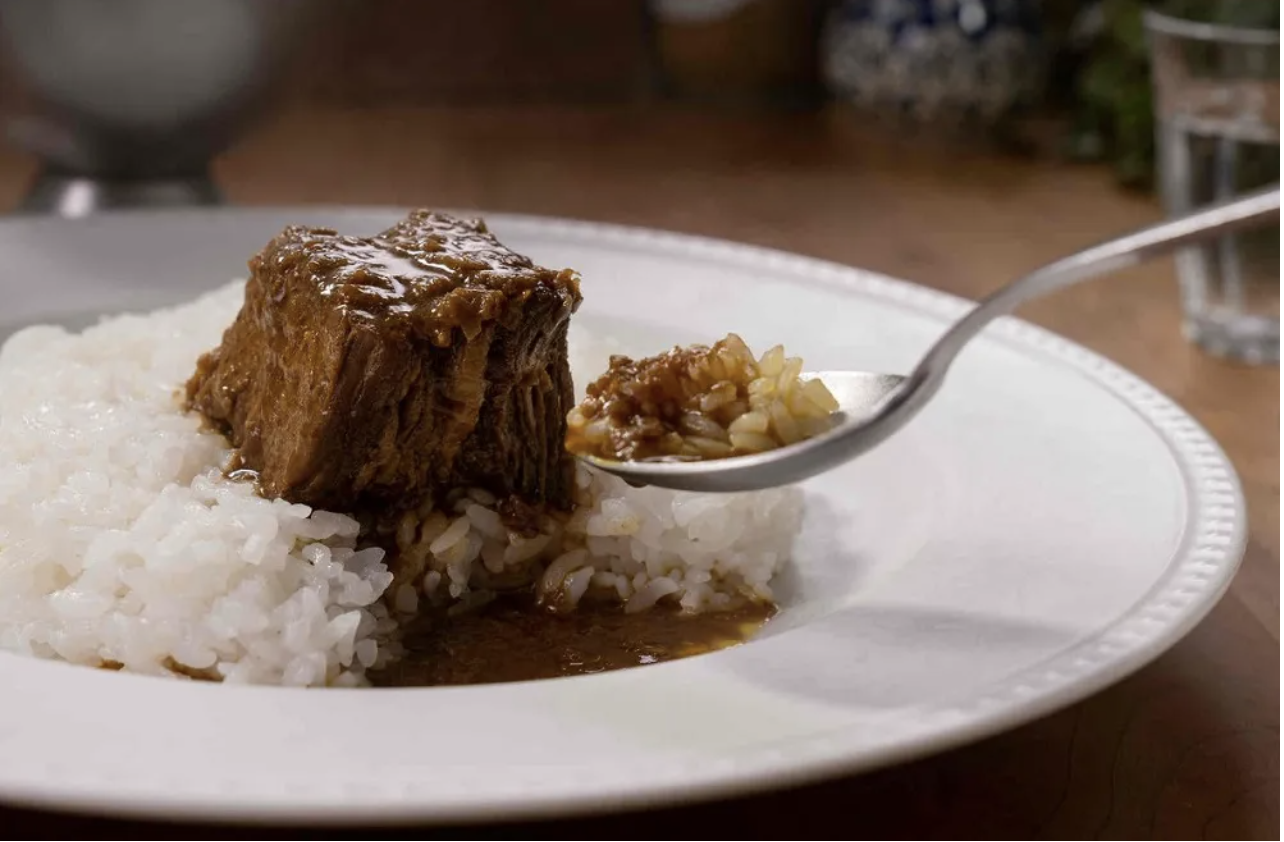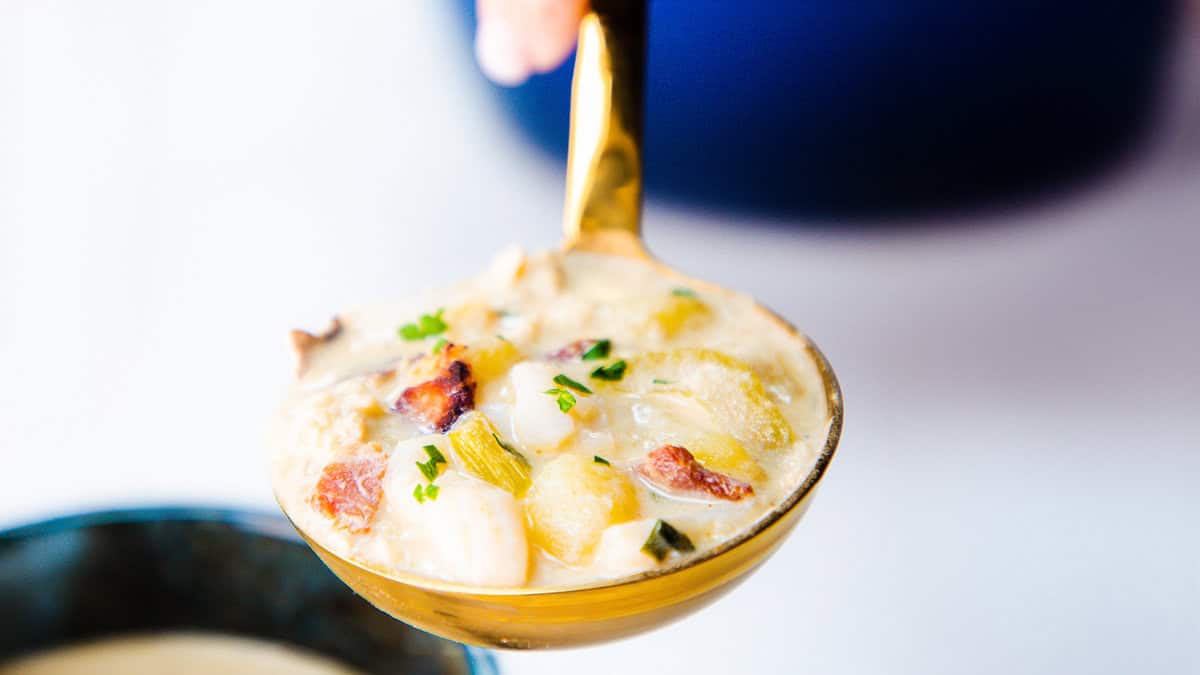Hoshigaki is a traditional Japanese delicacy that transforms fresh persimmons into candy-like dried fruits. The process of creating hoshigaki has been perfected over centuries and involves carefully peeling and hand-massaging the persimmons as they slowly air-dry, resulting in a uniquely sweet and complex flavor and a slightly chewy yet soft texture. Although the process is simple, it takes some time and labour but it’s super rewarding and hanging up the persimmons to prepare this treat will have you feeling like you’re in the Japanese countryside.

What is Hoshigaki ?
Hoshigaki are a traditional Japanese delicacy made from drying fresh persimmons (aka kaki) using a centuries-old process. This process involves carefully peeling persimmons, hanging them to dry, and gently massaging them over a few weeks. As they dry, the fruits develop a soft chewy texture and a rich sweetness, reminiscent of dates and dried figs. The natural sugars in the persimmons produces a white bloom coating on the exterior of the fruit called the ‘sugar bloom’ which is what makes hoshigaki particularly delicious and unique. Even without the sugar bloom, the dried persimmons become a dark amber colour and are super delicious.
Hoshigaki are also a symbol of patience and craftsmanship in Japanese culture because of the long and laborious process necessary to make them. They are often given as prestigious gifts during the winter season.

Ingredients you Need to Make Hoshigaki
Astringent Persimmons
Hoshigaki, the traditional Japanese dried persimmon, is typically made using astringent persimmons, most commonly the Hachiya variety. Here’s what you need to know about this ingredient:
- Astringent Persimmons:
– These persimmons, when unripe, have a high tannin content that makes them extremely bitter and unpalatable.
– The most common variety used for hoshigaki is the Hachiya persimmon, which has a large, acorn-like shape. - Characteristics:
– Astringent persimmons are larger and more elongated compared to non-astringent ones.
– They have a bright orange color when ripe.
– The flesh is soft and jelly-like when fully ripe. - Ripeness:
– For hoshigaki, these persimmons are used when they are still firm but ripe.
– If used when too soft, they won’t hold their shape during the drying process. - Transformation During Drying:
– As the firm persimmons dry, the astringency disappears.
– The fruit’s natural sugars concentrate, resulting in a sweet, complex flavor. - Why Astringent Persimmons Are Ideal:
– Their high tannin content helps preserve the fruit during the long drying process.
– The transformation from astringent to sweet creates a unique flavor profile. - Alternatives:
– While Hachiya persimmons are traditional, other astringent varieties can also be used.
– Non-astringent persimmons (like Fuyu) are generally not suitable for making hoshigaki.
In Japan, you can buy them from supermarkets in winter or you can pick them from the natural environment. Pick ones that have the stem left in a T shape to make it easier to tie the string.

Equipment Needed to Make Hoshigaki
You need 23inch to 27inch/60-70cm polyethylene strings or twine which you can buy from hardware stores for packing, etc. One string will hold two persimmons, so if you have 20 persimmons, you need 10 of those strings (all together you need about 20-23ft/6-7m to cut 10) for example.
Step by Step Instructions
Preparation for Drying
- Wash and peel persimmons with a sharp paring knife or a peeler. It’s personal preference.
- Starting from the bottom of the persimmon, peel vertically towards the top of each fruit.
- Tie a slip knot at the end of each string.
- Spread out the space between the twisted strings just above the knot.
- Hang a persimmon stem through the opening of the string.
- Repeat above for all persimmons.
- Boil water in a pot and dip the persimmons in it for about 5 seconds. Don’t forget to do this step as it sterilises the food and prevents mold from growing.

Drying Process
- Hang the persimmons on a drying laundry rack outside in a well-ventilated and sunny spot with good air circulation. Arrange the persimmons so that they are staggered and not next to each other. On rainy days, move the laundry rack indoors or to a place where it will not be exposed to direct rain. Also if you dry your persimmons outside, they may be eaten by birds and other animals such as mice or insects such as stink bugs, so bring it indoors at night.
- After about 5 days to a week, the outer skin will start to harden. At this point, give each persimmon a gentle squeeze/massage each persimmon with your fingers (avoid squishing it). Massage them again every second day onwards. This removes the bitterness and will become sweeter quickly.
- It depends on the size of the persimmons and the weather, but it usually takes a couple of weeks (about 2 to 3) until the bitterness is gone and the desired firmness is achieved, then cut off the strings along with the branches. The degree of dryness depends on how long you leave them. If you like hard persimmons, you can dry them longer, and if you like softer persimmons, you can dry them shorter.

- Leave the stem part in a T shape to make it easier to tie the string.
- Hang the persimmons on a laundry rack, leaving space between them so they don’t stick together.
- Massage persimmons with clean hands after the outer skin hardens. By massaging, the taste and softness become uniform.
Storage of Hoshigaki
If it is thoroughly dried, it can be stored at room temperature. However the shelf life of the original sweet flavour is 2-3 days in room temperature as it will start to dry. So it is recommended to store in a refrigerator or freezer.
Storing in Refrigerator
After wrapping each piece of fruit in plastic wrap or paper, put it in a storage bag or container and store it in the vegetable drawer. The storage period will be approximately one month longer than at room temperature, but it is important to keep it airtight as it dries easily.
Storing in Freezer
Wrap each hoshigaki individually with plastic wrap and place them in a zip lock freezer bag and store in the freezer. It will keep for about 6 months. Thaw it naturally at room temperature for about 5-6 hours before eating.
Serving Suggestions
Hoshigaki can be served in various delicious ways. One excellent pairing is with Shiraae, a traditional Japanese mashed tofu salad. The creamy, nutty flavors of the shiraae complement the sweet, chewy texture of hoshigaki beautifully.

For a delightful contrast in textures and flavors, serve hoshigaki with pickled daikon and carrot. The tangy, crispness of these pickled vegetables provides a refreshing taste to the rich sweetness of the dried persimmons. This combination offers a balance of flavors and creates a visually appealing plate.
FAQ
Q : How should I hang the astringent persimmon if there is no stem left?
A : Insert a bamboo skewer (such as one used for yakitori) from below the stem. Tie a knot in the string and thread the skewer through it. Do the same on the other side. Otherwise you can use a sterilised stainless-steel screw. Insert the screw into top of the fruit and tie twine to the screw heads.
Prep Time 20 minutes
Drying time 14 days
Total Time 14 days 20 minutes
Servings: 20
20 twine or polyethylene strings *1
- ▢ 20 astringent persimmons
Preparation of Persimmons
Wash the persimmons.
Peel the persimmons from the bottom towards the calyx (top of the fruit) vertically with a sharp paring knife.
Tie a knot at the end of each string.
Spread out the space between the twisted strings just above each knot.
Hang a persimmon stem through the opening of the string.
Repeat above for all persimmons.
Boil water in a pot and dip the persimmons in it for about 5 seconds.
Drying Process
Hang the persimmons on a drying laundry rack outside in a well-ventilated place.
Arrange the persimmons so that they are staggered and not next to each other or touching. *2
When the outer skin hardens after about 5 days to a week, gently massage each persimmon with your fingers and avoid squishing it.
Repeat above steps every second day.
It depends on the size of the persimmons and the weather, but it usually takes about 2-3 weeks to be ready. When the desired firmness is achieved, cut off the strings and enjoy.
*1 one string should measure about 23inch to 27inch/60-70cm (see above post).
*2 On rainy days, move the laundry rack indoors. Also bring it indoors at night as they may be eaten by birds and other animals such as mice.
Calories: 213kcal · Carbohydrates: 56g · Protein: 1g · Fat: 1g · Sodium: 2mg · Potassium: 521mg · Vitamin C: 111mg · Calcium: 45mg · Iron: 4mg
Course: Appetiser, condiments, Snack
Cuisine: Japanese
I want to see it! Tag @chopstickchronicles on social media!
The site and our mobile application may contain links to affiliate websites. We receive a small affiliate commission for any purchase made by you on the affiliate website using such links. Read our disclosure policy.











 English (US) ·
English (US) ·